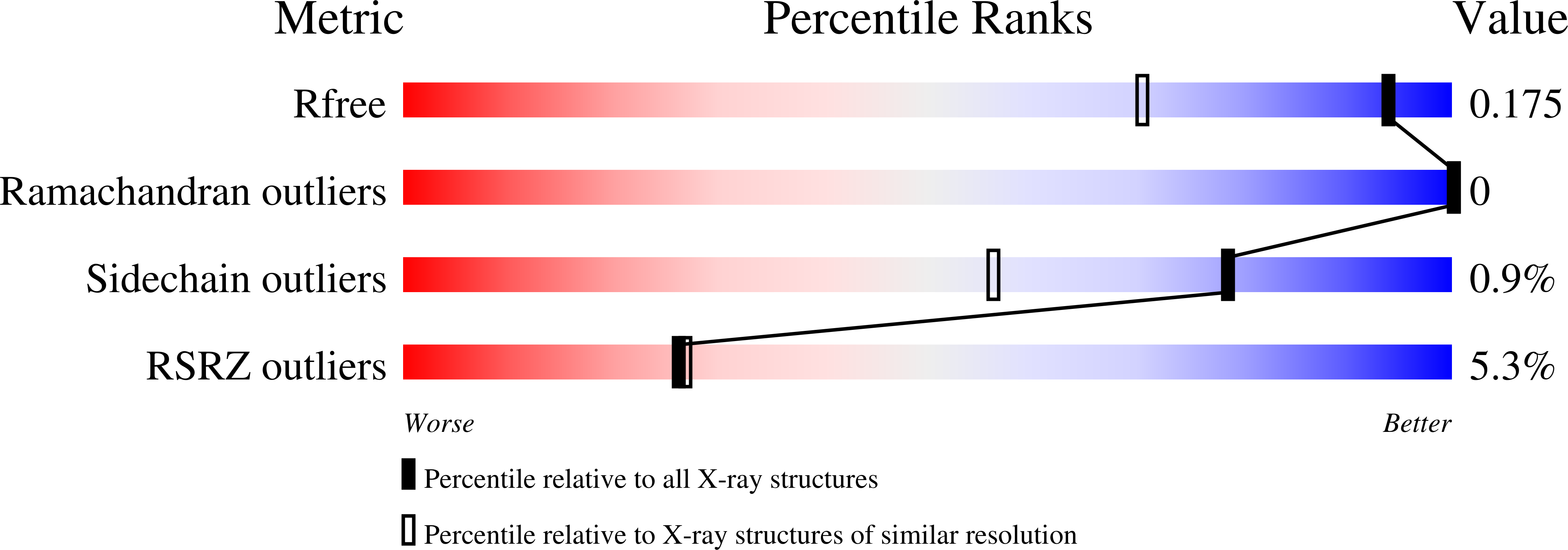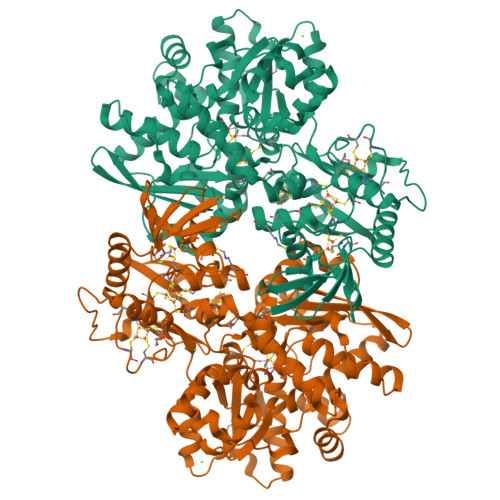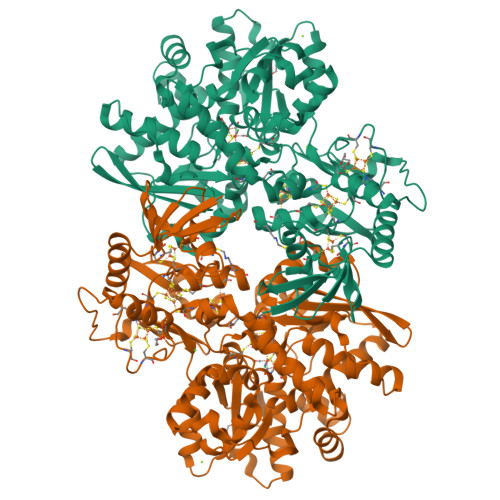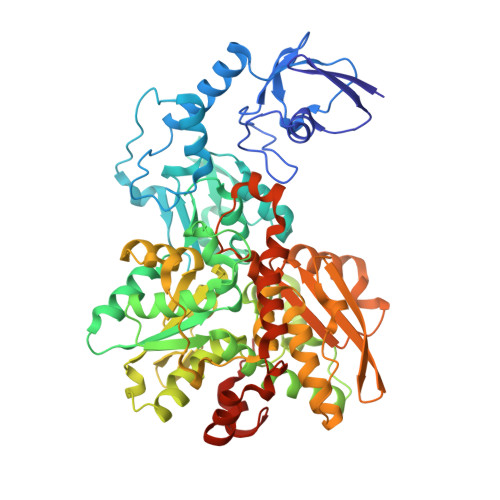Insights into the Molecular Mechanism of Formaldehyde Inhibition of [FeFe]-Hydrogenases.
Duan, J., Veliju, A., Lampret, O., Liu, L., Yadav, S., Apfel, U.P., Armstrong, F.A., Hemschemeier, A., Hofmann, E.(2023) J Am Chem Soc 145: 26068-26074
- PubMed: 37983562
- DOI: https://doi.org/10.1021/jacs.3c07800
- Primary Citation of Related Structures:
8PVM, 8QM3 - PubMed Abstract:
[FeFe]-hydrogenases are efficient H 2 converting biocatalysts that are inhibited by formaldehyde (HCHO). The molecular mechanism of this inhibition has so far not been experimentally solved. Here, we obtained high-resolution crystal structures of the HCHO-treated [FeFe]-hydrogenase CpI from Clostridium pasteurianum , showing HCHO reacts with the secondary amine base of the catalytic cofactor and the cysteine C299 of the proton transfer pathway which both are very important for catalytic turnover. Kinetic assays via protein film electrochemistry show the CpI variant C299D is significantly less inhibited by HCHO, corroborating the structural results. By combining our data from protein crystallography, site-directed mutagenesis and protein film electrochemistry, a reaction mechanism involving the cofactor's amine base, the thiol group of C299 and HCHO can be deduced. In addition to the specific case of [FeFe]-hydrogenases, our study provides additional insights into the reactions between HCHO and protein molecules.
Organizational Affiliation:
Photobiotechnology, Faculty of Biology and Biotechnology, Ruhr University Bochum, 44801 Bochum, Germany.


























